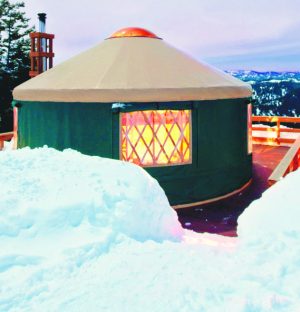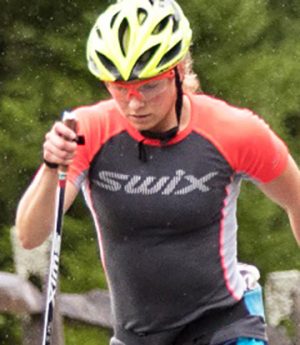![Holly Brooks (APU) earned her first national title. [P] Andy Canniff/Swixsport](http://skitrax.com/wp-content/uploads/2011/01/Brooks.412-200x133.jpg)
Holly Brooks (APU) earned her first national title. © Andy Canniff/Swixsport
January 04, 2011 (Rumford, ME) – The USSA National Championship classic sprint race in Rumford, Maine lived up to expectations as an exciting and challenging event. The organizing committee did an amazing job given the prevailing weather conditions over the past week and Sunday’s race was fair for all the racers competing.
![Torin Koos (MODP) claims the men's sprint title [P] Andy Canniff/Swixsport](http://skitrax.com/wp-content/uploads/2011/01/Koos.353-200x133.jpg)
Torin Koos (MODP) claims the men's sprint title © Andy Canniff/Swixsport
The weather forecasts were as predicted for Sunday with warm air temperatures and wet corn snow crystals. Track conditions were extremely dirty and keeping ski bases as clean as possible was one important aspect to having fast skis. Structure also played an important role in the ski preparation process, as the snow was very wet due to temperatures not dropping below freezing for the prior 48 hours before the race. Glide wax selection was straight forward, as the weather and snow conditions did not drastically change prior to or during the race.
![Eliska Hajkova (Colorado) wins a heat. [P] Andy Canniff/Swixsport](http://skitrax.com/wp-content/uploads/2011/01/Hajkova.313-200x133.jpg)
Eliska Hajkova (Colorado) wins a heat. © Andy Canniff/Swixsport
Swix racing service was present at the event and ran a number of on snow tests to determine the optimum combination of glide wax, base structure and kick wax that was used by many top competitors in the classic sprint.
![(l-r) Lars Flora (APU), Erik Bjornsen (UAA), Skyler Davis (SMS). [P] Andy Canniff/Swixsport](http://skitrax.com/wp-content/uploads/2011/01/Flor-Bjor-Sky-294-200x133.jpg)
(l-r) Lars Flora (APU), Erik Bjornsen (UAA), Skyler Davis (SMS). © Andy Canniff/Swixsport
Starting with glide testing, we tested base and mid layer paraffin waxes. MB77- Moly Fluor Wax was an ideal base paraffin for these dirty snow conditions. On top of the MB77, testing found HF8BW to run the fastest, with the BW additive aiding in repelling the considerable amount of dirt on the race course.
Once we had our base paraffin and layer paraffin waxes identified and applied to our skis, the next step was to find the ideal Cera F top coat. Testing found that FC8X was the fastest Cera powder. The combination of MB77, HF8BW and FC8X is a widely used in World Cup racing with a history of providing excellent race results.
The morning of the race, Swix RS tested final layer Cera F liquids and base structure. We found FC8L to be the best liquid to use over the top of FC8X. The structure test revealed that the T401 Swix Super riller with the 1.0mm coarse bar combined with the 1.0mm Broken V structure roller over the top greatly reduced the wet friction created by the moisture in the snow. Also, this structure combination did not collect dirt, keeping the skis as clean as possible in these extremely dirty snow conditions.
![Finish line lunge (l) Kate Fitzgerald (APU) and Rebecca Rorabaugh (APU). [P] Andy Canniff/Swixsport](http://skitrax.com/wp-content/uploads/2011/01/Fitz-Rorb.389-200x133.jpg)
Finish line lunge (l) Kate Fitzgerald (APU) and Rebecca Rorabaugh (APU). © Andy Canniff/Swixsport
Kick waxing was very straight forward, given the snow crystals present. A thin klister base of KR20, covered with a thin layer KR35 provided a strong binder layer for the top, race wax layer of KR70 with just a few dots of K22n mixed into the KR70. The KR70 provided great kick and the K22n added toughness to the KR70, reducing wear and icing. It was important to make sure the race wax layer was not too thick, as this would collect dirt and slow the skis down.
![Brooks at the front in one of the heats. [P] Andy Canniff/Swixsport](http://skitrax.com/wp-content/uploads/2011/01/Brooks-sprint-action.245-200x133.jpg)
Brooks at the front in one of the heats. © Andy Canniff/Swixsport
Weather conditions look to improve as the temperatures will be dropping below freezing for the next week. The snow guns are running and we are looking forward to testing in the new conditions. Look for updates at www.SwixRacing.us and SwixNordic on Facebook.
![Holly Brooks (APU) takes the win. [P] Andy Canniff/Swixsport](http://skitrax.com/wp-content/uploads/2011/01/Brooks-11_sprint.31-200x263.jpg)
Holly Brooks (APU) takes the win. © Andy Canniff/Swixsport
Only Swix’s Cera Nova wax matrix takes the guesswork out of waxing by creating a perfect wax for each snow condition.






![National camp action [P]...](https://skitrax.com/wp-content/uploads/2019/08/Duluth-4-2019-08-08-at-10.46.51-AM-300x246.png)
![Matt Liebsch on the CXC Elite Team [P] CXC...](https://skitrax.com/wp-content/uploads/2019/08/Matt-Liebsch-CXC.2-525x700.4-300x267.jpg)
![Dan LaBlanc [P]...](https://skitrax.com/wp-content/uploads/2019/08/Dan-LaBlanc-img_1855.3.jpg)

![Holly Brooks (APU) earned her first national title. [P] Andy Canniff/Swixsport](http://skitrax.com/wp-content/uploads/2011/01/Brooks.412-200x133.jpg)
![Torin Koos (MODP) claims the men's sprint title [P] Andy Canniff/Swixsport](http://skitrax.com/wp-content/uploads/2011/01/Koos.353-200x133.jpg)
![Eliska Hajkova (Colorado) wins a heat. [P] Andy Canniff/Swixsport](http://skitrax.com/wp-content/uploads/2011/01/Hajkova.313-200x133.jpg)
![(l-r) Lars Flora (APU), Erik Bjornsen (UAA), Skyler Davis (SMS). [P] Andy Canniff/Swixsport](http://skitrax.com/wp-content/uploads/2011/01/Flor-Bjor-Sky-294-200x133.jpg)
![Finish line lunge (l) Kate Fitzgerald (APU) and Rebecca Rorabaugh (APU). [P] Andy Canniff/Swixsport](http://skitrax.com/wp-content/uploads/2011/01/Fitz-Rorb.389-200x133.jpg)
![Brooks at the front in one of the heats. [P] Andy Canniff/Swixsport](http://skitrax.com/wp-content/uploads/2011/01/Brooks-sprint-action.245-200x133.jpg)
![Holly Brooks (APU) takes the win. [P] Andy Canniff/Swixsport](http://skitrax.com/wp-content/uploads/2011/01/Brooks-11_sprint.31-200x263.jpg)